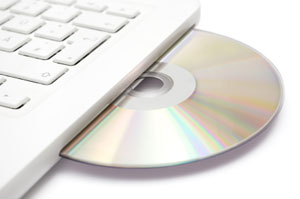
Once a company grows into multiple entities, there are special challenges to face that were not present as a single company. There are ways you can keep these challenges under control, and one way is to use the features available within your accounting software. Here are some of the ways accounting software can help you manage multiple businesses.
Consolidated reporting.
When you own or manage multiple companies, you may want to look at the financial information of one company on its own, or have the option of combining the financials of several companies to look at together. Having the option to consolidate the financials of some or all companies can be extremely helpful for this reason. When you are able to get a financial picture of each business, you can make smart adjustments as necessary.
Multiple warehouse management.
While one company could possibly have more than one warehouse, it’s even more likely that multiple companies will. In this case, use a multiple warehouse management option within your accounting software’s inventory management system. Keeping track of your inventory by location is more efficient, since you can see with just a few clicks where your items are, and how many. This in turn helps you provide your customers with the products they need more quickly, too!
MICR Check Printing
Managing the accounting for more than one company means printing separate payroll and accounts payable checks for those companies. The problem of having to switch out the check paper each and every time can be solved by using the MICR check printing option. MICR check printing allows you to set up different check designs, and then print them with a special ink, onto blank check paper. It even allows you to print a signature on the check.
These are just a few of the accounting software features that can help you manage multiple companies! Learn more about your accounting software today to be sure you are using it to its fullest capacity, and you might be able to try to something new to streamline your processes.

Of course you are always looking to save yourself some time so you can get your job done faster, right? Your accounting software surely offers its own set of time-saving functions. Here are some standard time-saving tools you might want to try out today, in the interest of shortening entry time and getting your job done faster.
Entering dates
Instead of having to type in the date every time you enter a transaction, use the shortcuts available throughout your accounting software. Typical shortcuts for the entry of dates include:
- Choosing dates from a calendar which can be pulled up on the screen.
- Auto-fill, a function in which the system recognizes the current month and year. You need only enter the day. For example if it is now February 2012, and you enter the number 25, the auto-fill functions will recognize it as February 25, 2012.
- Numerical entry. You enter numerically the month, date and year, for example 022512. The system recognizes this as February 25, 2012.
Set as default
If you find yourself selecting the same option each time you go through data entry, you may want to save yourself time by setting that option as the default. That way it appears every time you come back to the data entry screen, and you don’t have to manually choose it!
Tab stops
Are there fields of information you see every time you enter data, but you never use them? You can set up the system to skip those fields! Tab stops allow you to choose which fields the cursor stops at in each transaction entry screen. By setting tab stops, the cursor will only stop at those items you actually use, saving you significant data entry time.
You have enough to do during the day! Let your accounting software help you cut out unnecessary time and shorten your data entry process.

So you’ve done your homework and narrowed down your accounting software search to just a few systems. Now it’s time to test out each system and see which one works best for you. There are several ways to test out your new system. Being aware of what is available will help you choose the right method for you and your business.
View product videos
Watching a video about your potential software is a good way to get to know the system and in general, what it has to offer, including some of its features and the user interface. The downside of product videos is that you can’t search for the features you are seeking, or see how the product works. It is a great way to get a general feel for the system, which can be extremely helpful at the start of your software search.
Attend a live demonstration
Some software companies offer potential users the opportunity to join a demonstration of their software, whether it’s via the internet or in person. This can be a beneficial use of your time, since you can watch an expert navigate through the system, with the ability to ask questions along the way. After all, who is better at showing you the system than a system expert? Attending a demonstration is a must-do for the purchase of any software system!
Fully functioning trial software version
Some software vendors offer a trial version of their software for you to try out. Some software trials are fully functioning versions of the software, and others are more limited. The advantage to using a software trial version is that you can really get a feel for how the system works. However, without some training or at least familiarity with a software system, it’s nearly impossible to get a true picture of how the software really works.
In a perfect world, you would have the option to use all three of the above to make your decision. First, view a product video at the start of your software search, in order to gain familiarity with the system. After that, attend a live demonstration to get an idea if that system (how it works and its feature set) is an appropriate option for you and your business. Using these two options together can be enough to make your decision, but if you still have questions after that, installing the trial software version can really help. Just be sure that when you are in the trial version working, there is somebody at the software vendor company who is willing to help you along the way and answer any questions that may arise during your testing.

Every business seems to have some recurring transactions. Recurring payments are those you have to pay more than once, and often on a regular basis, such as monthly bills, insurance payments, rent and more. You can use the recurring payments function in Accounts Payable to streamline the process of paying monthly expenses.
Individual Recurring Transaction
Creating an individual recurring transaction involves setting up and saving the basic information on the invoice, so it can be retrieved and processed each time you need to pay that invoice/vendor. Typically you would enter a description that is familiar, so you can find the correct transaction each time you need to use it. Once you have entered all the necessary information for the individual recurring invoice, that invoice will be saved in a list of recurring transactions. When it comes time to processes the invoice, simply select it from the list, open and edit the dollar amount (if necessary), and save the transaction.
Groups of Recurring Transactions
For even more efficiency, set up your recurring transactions within a group (or batch)! For your monthly recurring transactions, set them up in a monthly recurring group, for your quarterly transactions a quarterly group, and so on. First, create the name of your transaction batch, for instance “Monthly Recurring Bills.” Set up individual transactions and assign each of them to their group. By assigning the transactions to a group, the entire group of transactions can be created easily when needed. When it comes time to run a group of invoices, you go in and change any information if needed, run those invoices, and print them along with a check.
Setting up and using recurring transactions can save you significant time!

Direct deposit is a feature included within a payroll program that allows you to deposit employee pay directly into a bank account. Payroll software programs vary when it comes to their direct deposit capabilities. For example, some systems allow you to deposit funds to your choice of bank account, while others require the money to be transferred via their service. Here are some factors to consider when trying to find the right direct deposit feature for your business.
Transfer options.
There are two main ways payroll systems allow you to transfer pay. You can either have the funds deposited directly into each employee’s individual bank account from your own choice of bank, or you can use a service which takes the funds and deposits them into the employee bank accounts for you. By using your own bank to deposit the funds, you may save money; however some banks do charge for this service and fees vary greatly. Using a service to deposit the funds does incur ongoing costs also, so be sure to check the costs of the service before deciding on one.
Deposit employee pay and third party pay.
Obviously the most important aspect of direct deposit is the ability to distribute employee pay to their bank accounts. But some payroll systems go a step further, and also provide an option to deposit third party pay electronically. This function allows employers to pay third party payees, such as 401K management companies or insurance companies, via electronic deposit, rather than processing a check manually. Sending these payments electronically can be a huge time saver when compared to writing and sending paper checks.
Deposit to multiple bank accounts.
A basic direct deposit system will allow for one account, but some systems allow for multiple deposit accounts. This way, employees can deposit part of their check to checking, part to savings, another part to a holiday savings account, and so on. While this typically does not cost the employer extra, it provides employees with the perk of more comprehensive money management options. So it’s a win-win!
Pay cards
Some payroll companies offer employers the option of loading (depositing) employee pay to a pay card (a debit card) instead of into a regular bank account. This is an excellent option for employees who do not have bank accounts. For those without bank accounts, it eliminates concern about where to cash a check, and also the associated check cashing costs.
It pays to use direct deposit, and all the features that go along with it. Check into your payroll software and what it can offer you for direct deposit. You could be on your way to great time savings and happier employees.